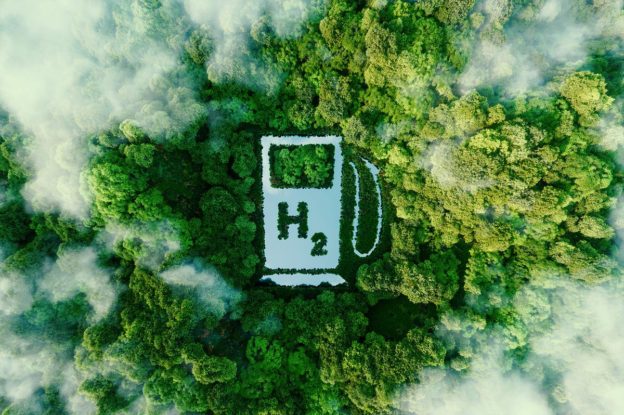Implementation must improve, and a clear roadmap for all clean energy sources is required to ensure they co-exist
On February 1, Finance Minister Nirmala Sitharaman, in her Union Budget 2023, spelled out the country’s vision for the Amrit Kaal. In her Budget speech she said: “The economic agenda for achieving this vision focuses on three things: first, facilitating ample opportunities for citizens, especially the youth, to fulfil their aspirations; second, providing strong impetus to growth and job creation; and third, strengthening macro-economic stability.”
To service these focus areas in the journey to India@100, she spelled out four opportunities that can be transformative. The fourth opportunity was green growth.
“We are implementing many programmes for green fuel, green energy, green farming, green mobility, green buildings, and green equipment, and policies for efficient use of energy across various economic sectors. These green growth efforts help in reducing carbon intensity of the economy and provides for large-scale green job opportunities,” she said.
A day before the Finance Minister spoke about green growth, V Anantha Nageswaran, Chief Economic Adviser, while speaking on his Economic Survey 2022-23, pointed towards energy transition for a cleaner tomorrow. To realise India’s potential in Amrit Kaal, in his presentation, he pointed out seven components which included energy security and energy transition.
Let us look at what is on offer in Budget:
The Budget provides ₹35,000 crore for priority capital investments towards energy transition and net zero objectives, and energy security by the Ministry of Petroleum and Natural Gas.
To steer the economy on the sustainable development path, battery energy storage systems with capacity of 4,000 MWh will be supported with viability gap funding. A detailed framework for pumped storage projects will also be formulated.
The inter-State transmission system for evacuation and grid integration of 13 GW renewable energy from Ladakh will be constructed with an investment of ₹20,700 crore including Central support of ₹8,300 crore.
Then there is a green credit programme. For encouraging behavioural change, a green credit programme will be notified under the Environment (Protection) Act. This will incentivise environmentally sustainable and responsive actions by companies, individuals and local bodies, and help mobilise additional resources for such activities.
The government has placed energy transition at the centre of priorities in this year’s Budget and within that green hydrogen is leading the charge.
Green hydrogen
Let us not forget that the green hydrogen space today is very dynamic, and globally things are moving fast. On January 4, the Union Cabinet had approved the National Green Hydrogen Mission with an initial outlay of ₹19,744 crore, including an outlay of ₹17,490 crore for the SIGHT programme, ₹1,466 crore for pilot projects, ₹400 crore for R&D, and ₹388 crore towards other Mission components. The Ministry for New and Renewable Energy was asked to formulate the scheme guidelines for implementation of the respective components.
According to the statement, India’s green hydrogen production capacity is likely to reach at least 5 mmt per annum, with an associated renewable energy capacity addition of about 125 GW. The targets by 2030 are likely to bring in over ₹8-lakh crore investments and create over six lakh jobs. Nearly 50 mmt per annum of CO2 emissions are expected to be averted by 2030.
Today, countries are competing to establish themselves at the centre of this new energy. Therefore, to meet the commitments made in this Budget, the government will also need to move at a faster pace and build in a mechanism that will make sure that India stays competitive in this very dynamically moving sector.
What will be of an utmost importance right now is a clear roadmap for all energy resources to ensure that they co-exist. There has been an instance where a segment of renewable energy after the initial push and just when it was stabilising and moving up the curve, was unceremoniously dumped as the attention got diverted to a newer resource.
There is also a need to create awareness about the use of various resources of energy. Next level of industry-government collaboration needs to be considered. Being an emerging sector there is a requirement for building the fundamentals.
While the government is taking corrective measures, there are issues which remain unresolved. For example, the intent to become self-reliant is the right step, but the ground reality also needs to be considered. Most of the raw materials for the solar sector are sourced from overseas and assembled here. Supply chain management needs to be streamlined for a better tomorrow.
For instance, for green hydrogen also, the technology will come from somewhere. Therefore, when imposing any duty restrictions the ground reality needs to be considered.
The Budget has reiterated the government’s commitment to achieve net-zero targets alongside making India an important hub for renewable manufacturing. Budget 2023 clearly indicates India is ready to establish itself in the leadership position on the global green energy transition. But, the need of the hour is for industry and government to work together in helping India stay abreast and remain at the competitive forefront.
https://www.thehindubusinessline.com/opinion/green-energy-drive-must-gather-pace/article66468574.ece/amp/





